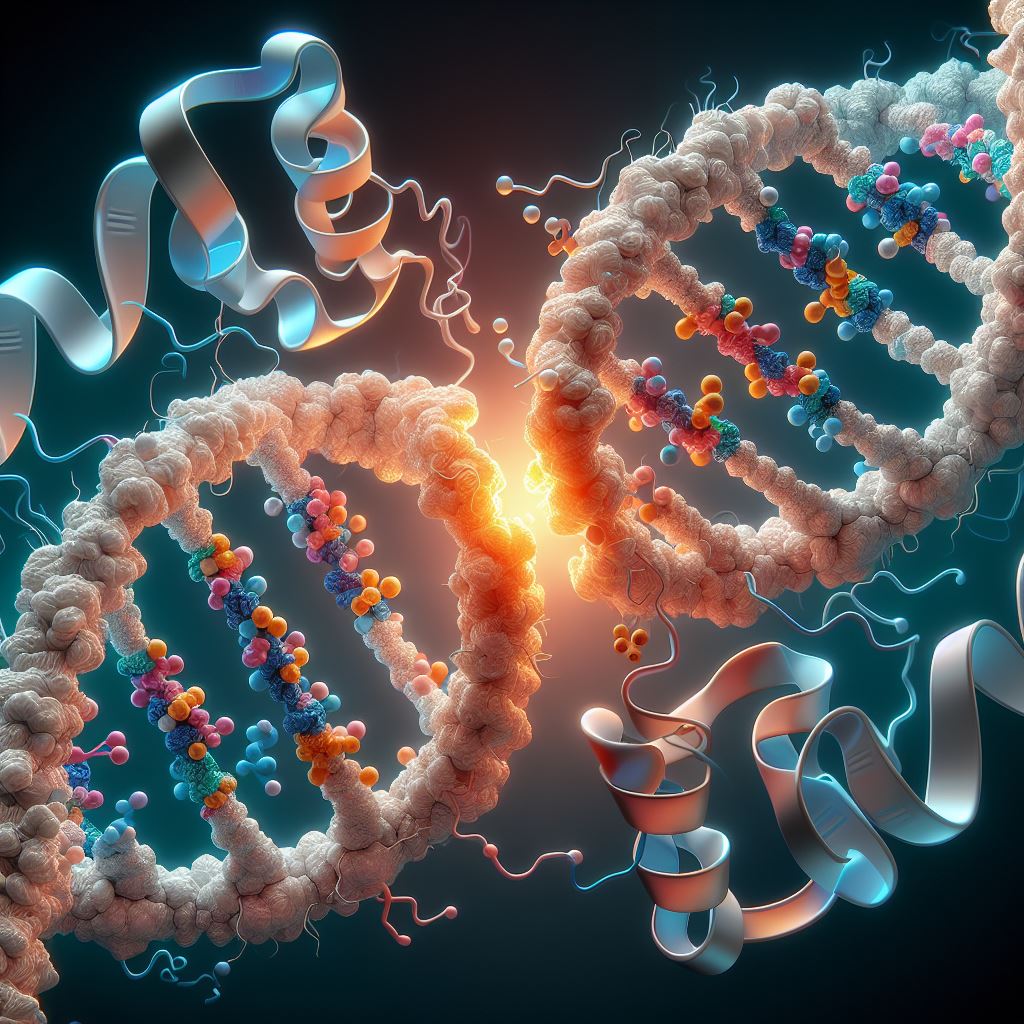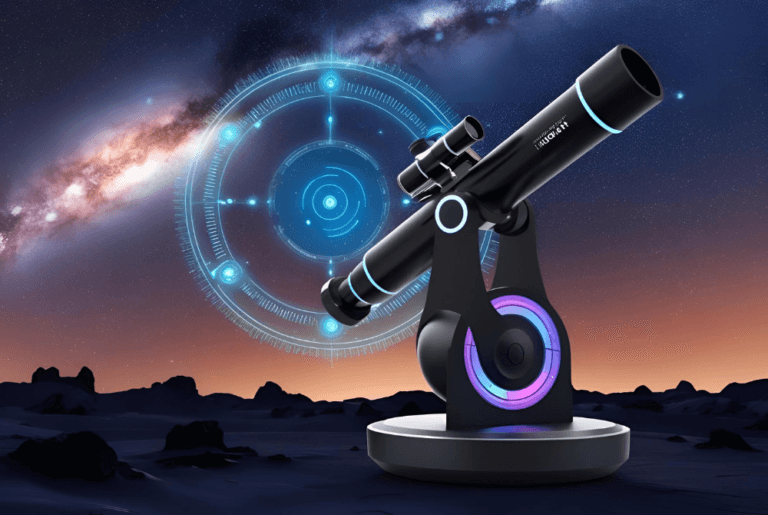How CRISPR Could Change Everything We Know About Disease
Imagine a world where cystic fibrosis, a debilitating lung disease that steals the breath of children, is a thing of the past. Imagine a future free from sickle cell disease, a painful condition that cripples millions. These dreams, once relegated to the realm of science fiction, are now inching closer to reality thanks to a revolutionary tool called CRISPR (Clustered Regularly Interspaced Short Palindromic Repeats).
Hi everyone, I’m Yuvraj, and I’m passionate about exploring the life-changing inventions that hold the potential to reshape our world. Today, we delve into Clustered Regularly Interspaced Short Palindromic Repeats, a groundbreaking gene-editing technology that promises to revolutionize medicine, agriculture, and even our understanding of life itself.

What are CRISPR Genome Editing and CAS9?
Have you ever wondered what makes you, you? Why do you have your mom’s eyes and your dad’s curly hair? The answer lies within our DNA, the instruction manual that tells our bodies how to build and function. Imagine DNA as a long, twisted ladder. The rungs of this ladder are made up of pairs of chemical instructions called genes. These genes are like recipes that determine everything from eye color to disease susceptibility.
Now, gene editing is a powerful tool that allows scientists to modify these genes, essentially rewriting the instructions in our DNA blueprint. Before CRISPR came along, editing genes was like trying to fix a typo with a dull pencil – cumbersome, expensive, and prone to errors. But (Clustered Regularly Interspaced Short Palindromic Repeats) is a game-changer, offering a much more precise and efficient way to edit genes.
Think of CRISPR DNA editing as a molecular scalpel with two key components:
- Guide RNA: Imagine this as a bloodhound that sniffs out the exact location in the DNA that needs editing. The guide RNA searches the vast landscape of our DNA code and identifies the specific gene or section that needs attention.
- Cas9 Protein: Once the guide RNA finds the target spot, it acts like a beacon, calling in Cas9, the protein that acts as the scalpel. Cas9 cuts the DNA strand with remarkable precision at the location identified by the guide RNA.
Here’s the beauty of CRISPR Technology:
- Precise: Unlike previous methods, CRISPR cuts DNA incredibly accurately, minimizing the risk of unintended edits.
- Versatile: CRISPR can be used to edit genes in a wide variety of organisms, from plants and animals to even human cells.
- Affordable: Compared to older methods, CRISPR is a much faster and more cost-effective way to edit genes.
This precise control over DNA opens a new chapter in biology and medicine. Imagine a future where:
- We can cure genetic diseases like cystic fibrosis and sickle cell anemia by correcting the faulty genes responsible.
- We can create crops resistant to pests and diseases, ensuring a more stable food supply for a growing population.
- We can even explore potential therapies to enhance human health and longevity.

However, with such immense power comes responsibility. Ethical considerations surrounding CRISPR are crucial, and we’ll delve into those in the next section. For now, remember CRISPR as a revolutionary tool with the potential to rewrite the story of life itself.
A Brief History of Gene Editing: Paving the Way for CRISPR Cas9
The ability to edit genes, the fundamental code of life, has transitioned from a fantastical dream to a tangible reality. This remarkable journey, spanning over half a century, is paved with innovation and the relentless pursuit of scientific understanding. Let’s delve into the fascinating history of gene editing that ultimately led to the revolutionary CRISPR technology.
- The Dawn of Genetic Engineering (1960s-1980s):
The seeds of gene editing were sown with the groundbreaking discovery of the DNA double helix structure in 1953 by James Watson and Francis Crick. This revelation ignited a spark in the scientific community, leading to the birth of genetic engineering in the 1960s. Pioneering researchers like Stanley Cohen and Herbert Boyer developed techniques for introducing foreign genetic material into cells. These early methods, however, were akin to blunt instruments. They relied on viruses or plasmids (circular DNA molecules) to haphazardly insert genes throughout the genome, with unpredictable and potentially harmful consequences. While these methods laid the groundwork for future advancements, the lack of precision remained a significant hurdle.
- Towards Targeted Editing: The Rise of Nucleases (1980s-1990s):
The quest for more targeted gene editing techniques intensified in the 1980s. This era saw the development of tools like zinc finger nucleases (ZFNs) and transcription activator-like effector nucleases (TALENs). These technologies offered a significant leap forward, allowing scientists to target specific regions of DNA with greater accuracy. ZFNs and TALENs are essentially engineered proteins designed to recognize and bind to a particular DNA sequence. Once bound, they introduce a targeted cut in the DNA strand, creating an entry point for scientists to insert or modify desired genes. However, designing and using these nucleases remained a complex and expensive process, limiting their widespread application.

- The CRISPR Revolution: A New Era of Gene Editing (2000s-Present):
The landscape of gene editing underwent a seismic shift with the discovery of the (Clustered Regularly Interspaced Short Palindromic Repeats) system in bacteria in the early 2000s. Jennifer Doudna and Emmanuelle Charpentier, along with their collaborators, recognized the potential of this natural defense mechanism that bacteria use to fight viruses. CRISPR acts as a bacterial immune system, storing snippets of viral DNA from past infections. When a virus tries to attack again, it recognizes the viral DNA and deploys a protein called Cas9 to cut and eliminate the invading virus. Scientists realized that by reprogramming CRISPR, they could harness this natural cutting machinery to target and edit genes with unparalleled ease and efficiency.
The key to CRISPR’s simplicity lies in its two-component system:
- Guide RNA: This molecule acts as a programmable GPS, guiding Cas9 to the precise location in the genome that needs editing.
- Cas9 Protein: This molecular scalpel makes a clean cut at the targeted DNA sequence, creating an opening for scientists to introduce desired genetic changes.
CRISPR’s remarkable advantages over previous methods include:
- Unmatched Precision: CRISPR edits DNA with incredible accuracy, minimizing the risk of unintended off-target effects.
- Versatility: This technology can be used to edit genes in a wide range of organisms, from plants and animals to human cells.
- Affordability and Ease of Use: Compared to older methods, CRISPR is a significantly faster and more cost-effective way to edit genes.
The arrival of CRISPR has transformed gene editing from a cumbersome and expensive endeavor to a powerful and accessible tool. This revolutionary technology has opened doors to a new era of scientific exploration with the potential to revolutionize medicine, agriculture, and biotechnology.
Additional Resources:
- A historical perspective on gene editing techniques
- A scientific explanation of CRISPR
- The Human Genome Project
How CRISPR Technology Revolutionizes Gene Editing
Imagine a world where correcting faulty genes is as precise as a surgeon wielding a scalpel. This is the promise of CRISPR (Clustered Regularly Interspaced Short Palindromic Repeats), a revolutionary gene-editing tool poised to transform biology and medicine.
Before CRISPR, editing genes resembled blunt instruments attempting delicate surgery. Traditional methods were often cumbersome, expensive, and prone to off-target effects, potentially causing unintended harm. CRISPR, on the other hand, operates with remarkable precision and ease.
Think of CRISPR as a sophisticated molecular toolkit containing two key components: a guide RNA molecule and a Cas9 protein. The guide RNA acts like a GPS, cleverly navigating the vast landscape of our DNA and identifying the exact location that needs editing. Cas9, the protein component, functions as the scalpel. Once guided to the target site, Cas9 precisely cuts the DNA strand, creating a clean break. This break then becomes the entry point for scientists to perform various edits: inserting healthy genes to replace faulty ones, removing unwanted mutations, or even fine-tuning specific sections of DNA.
The simplicity and efficiency of CRISPR DNA editing compared to its predecessors are truly groundbreaking. CRISPR offers a faster, more affordable, and far more precise way to manipulate DNA. This unprecedented control over the very building blocks of life opens a new chapter in scientific exploration, paving the way for potential cures to genetic diseases, the development of disease-resistant crops, and even the exploration of gene therapies that could enhance human health and longevity.
The Potential of CRISPR: A World Beyond Imagination
CRISPR isn’t just a scientific marvel; it’s a portal to a world of possibilities. This revolutionary gene-editing tool holds immense promise for revolutionizing medicine, agriculture, biotechnology, and even our understanding of life itself. Let’s delve into some of the areas where CRISPR is poised to make a significant impact:
Medicine: Reshaping Healthcare with Precision
Imagine a future where genetic diseases like cystic fibrosis, a thief of young lives, or sickle cell anemia, a constant battle against pain, become relics of the past. CRISPR is paving the way for gene therapy, allowing scientists to correct faulty genes at their source. Clinical trials are already underway using CRISPR to treat beta-thalassemia, a blood disorder, and researchers at The Children’s Hospital of Philadelphia are exploring its potential for various cancers by targeting specific mutations that drive tumor growth
Agriculture: Cultivating a More Resilient Future
Food security is a global concern, and CRISPR offers groundbreaking solutions. By editing the genes of crops, scientists can create plants resistant to devastating pests and diseases, safeguarding harvests and ensuring a more stable food supply. For instance, the International Rice Research Institute (IRRI) is using CRISPR to develop rice varieties immune to rice blast, a fungal disease that devastates rice crops across Asia. Additionally, scientists at Kansas State University are engineering wheat plants resistant to wheat streak mosaic virus, a major threat to wheat production globally. CRISPR also holds promise for engineering crops with enhanced nutritional value, potentially enriching diets in developing countries.
Biotechnology: A Universe of Untapped Potential
CRISPR’s applications extend far beyond medicine and agriculture. In the realm of biotechnology, scientists are exploring its potential to develop new materials with unique properties. Imagine engineering microbes to produce biofuels more efficiently or creating custom enzymes for industrial processes, all facilitated by the precise control CRISPR offers over an organism’s genetic makeup. For example, researchers at MIT are using CRISPR to engineer yeast strains that can produce valuable chemicals more efficiently, potentially leading to more sustainable industrial processes. Furthermore, CRISPR could revolutionize our understanding of evolution by allowing scientists to manipulate genes and study their impact on organisms in ways never before possible.

The Cutting Edge: Ongoing Research and Exciting Examples
The world of CRISPR research is a dynamic landscape brimming with exciting possibilities. Scientists at The Bill & Melinda Gates Foundation are exploring ways to edit the genes of mosquitoes, potentially eradicating malaria, a disease that plagues millions worldwide. Additionally, research is underway to use CRISPR to develop gene therapies for neurological disorders like Huntington’s disease and Alzheimer’s disease, offering hope for millions of patients and their families. For instance, a company called Editas Medicine is developing a CRISPR-based gene therapy for sickle cell disease, with clinical trials planned for the near future.
Ethical Considerations: A Discussion on the Future of CRISPR
The immense potential of CRISPR is undeniable, but with such power comes responsibility. Ethical considerations surrounding this revolutionary tool demand careful thought and open discussion. Two key concerns stand out: the specter of designer babies and the potential misuse of gene editing for eugenic purposes.
Designer Babies: Blurring the Lines of Natural Selection
The ability to edit human genes raises the unsettling prospect of designer babies, where parents could choose specific traits for their offspring, like enhanced intelligence or athletic ability. This scenario, once relegated to science fiction, is now a tangible possibility with CRISPR. However, the ethical and societal implications are profound. Who decides which traits are “desirable”? Do we risk creating a society obsessed with genetic perfection, further widening social divides? Moreover, the technology is still in its early stages, and the unintended consequences of altering the human genome for non-therapeutic purposes could be catastrophic.

Eugenics Revisited: A Dark Chapter We Must Not Repeat
The specter of eugenics, the historical practice of attempting to improve the human gene pool through selective breeding, also looms large. CRISPR, in the wrong hands, could be used to create a “superior” race, leading to discrimination and social unrest. Lessons from the dark past remind us of the dangers of manipulating human evolution for social or political agendas.
Navigating the Ethical Landscape: Responsible Research and Regulations
So, how do we move forward responsibly? The key lies in open dialogue, transparent research, and robust regulations. International collaboration is crucial to establish ethical guidelines for CRISPR research and development. Public engagement is essential to foster informed discussions and ensure societal concerns are addressed. Furthermore, clear and comprehensive regulations are necessary to prevent misuse of this powerful technology.
A Unique Perspective: CRISPR and the Human Condition
Beyond the specific concerns, CRISPR compels us to re-evaluate the very notion of the human condition. Are we comfortable altering the genetic blueprint of our species? What does it mean to be human if we can edit our own DNA at will? These are philosophical questions that require ongoing discussions not just amongst scientists and policymakers, but within society as a whole.
References:
Conclusion: A Look Ahead
CRISPR stands at the precipice of a revolution. This ingenious gene-editing tool holds the key to unlocking a future brimming with possibilities. From eradicating devastating diseases and ensuring a more resilient food supply to pioneering new materials and potentially rewriting the story of evolution, CRISPR’s potential is vast.
However, with such power comes responsibility. Open discussions about the ethical considerations surrounding CRISPR are crucial to ensure its responsible development and application.
The future of gene editing is one of immense hope and optimism. CRISPR DNA editing offers a chance to create a healthier, more sustainable world. As we move forward, let’s embrace this groundbreaking technology with both curiosity and caution, harnessing its power for the betterment of humanity.
The invitation to learn more extends beyond this blog. We encourage you to delve deeper into the world of CRISPR, explore its potential applications, and participate in the ongoing conversation about its ethical implications. Together, we can shape the future of gene editing and ensure it becomes a force for positive change in the world.
Intrigued by the potential of CRISPR Genome editing and curious about other emerging technologies that could shape our future? Check out some of my other blog posts:






